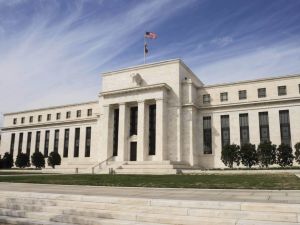The investment landscape is not the easiest to get your head around. Myriad products from myriad companies mean that knowing what is actually worth looking out for can be difficult. This only becomes more confusing when financial advice is added into the mix.
This is why HMRC launched the Financial Advice Market Review back in 2015, to make financial advice more accessible and, crucially, more affordable for the average investor. A lot of providers are still unclear as to exactly how much their service will charge, though, something we think is holding investors back whether they realise it or not.
Why does pricing matter?
The pricing of your investment can have a huge knock-on effect on your returns. If your investment were to achieve 5% returns but your provider is charging you 1% and the funds you are invested in have an underlying cost of 0.2%, that means your real returns are more like 3.8%.
In this situation, if you had £15,000 in your investment account, you would receive £750 returns in a year but all of £180 would be spent on your fees, so your returns would actually feel more like £570.
With a lot of investment providers, you’ll also be charged when you want to close your account. At some providers this charge can be as much as £20 per investment, so if you had a diversified portfolio and were invested in 7 different assets that you’d end up shelling out £140.
With all these various costs added up when you close your £15,000 account after a year, you would have a total of £15,430, as opposed to the £15,750 you might have expected.
What does low-cost mean?
At Moneyfarm, we think that everyone should have the opportunity to invest without worrying about fees chipping away at their savings. A key barrier to entry in the traditional wealth management market for many people is the expensive fees some providers charge.
Investors can also find themselves hit with surprise charges for running the platform or for withdrawing their money. These costs can quickly stack up and eat into investor returns.
At Moneyfarm, we keep our pricing structure simple and transparent – that means you won’t be charged any hidden fees, just the management and fund charges.
At Moneyfarm, you pay just 0.75% in management fees on your first £10,000, and then 0.60% on anything from £10,000 to £50,000. You’ll pay just 0.5% on investments from £50,000 to £100,000, and 0.35% on anything over £100,000.
There is, of course, an underlying Exchange-Traded Fund (ETF) charge averaging 0.2% – depending on the portfolio, but this is the case with any fund you buy. There is also a market spread cost of 0.09%. This means you won’t pay over 1.04% in total fees when you invest with Moneyfarm.
What will you always have to pay for?
Regardless of whether you set up an account with an independent financial adviser (IFA), bank, online wealth manager or you set it up yourself you will always have to pay that underlying fund cost.
That underlying cost depends on the type of fund. Moneyfarm invests heavily in ETFs, which are typically cheaper than other types of funds – for example, a mutual fund can charge as much as 1% in fund fees alone.
What is in the cheapest way to invest?
The cheapest way to invest is to do it yourself – this way, you won’t incur any management fees. However, investing can be complex and time-consuming even for experienced investors. So, if you don’t have a good understanding of financial markets, we would recommend using a digital wealth manager to help maximise your returns.
Many traditional discretionary providers (those that manage your investment on your behalf) will charge around 1% or higher on large investments (around £250,000). An IFA will offer completely tailored advice but at a cost of £75-£250 an hour.
5 tips for efficient investments:
- Make sure you understand the pricing – know the difference between management, fund, and ongoing fund charges.
- Shop around to make sure you get the deal that is right for you.
- Think about the length of your investment – if you are investing for the long term those costs can really add up.
- Consider which funds you’re investing in and balance out anticipated returns against the cost of the fund.
- If in doubt, ask the provider – at Moneyfarm we have a team ready to answer any of your questions.
Photo by Ashkan Forouzani on Unsplash





